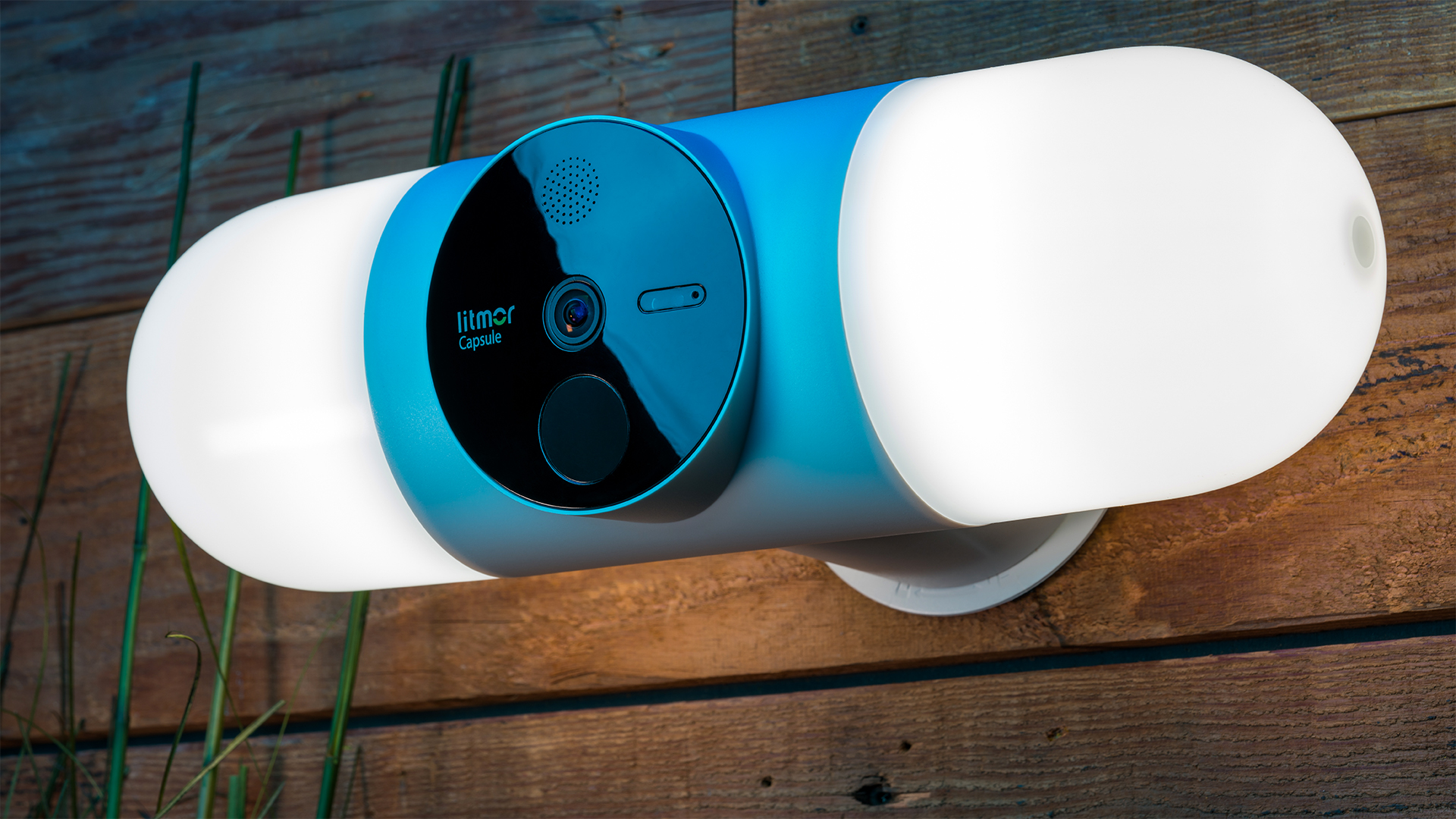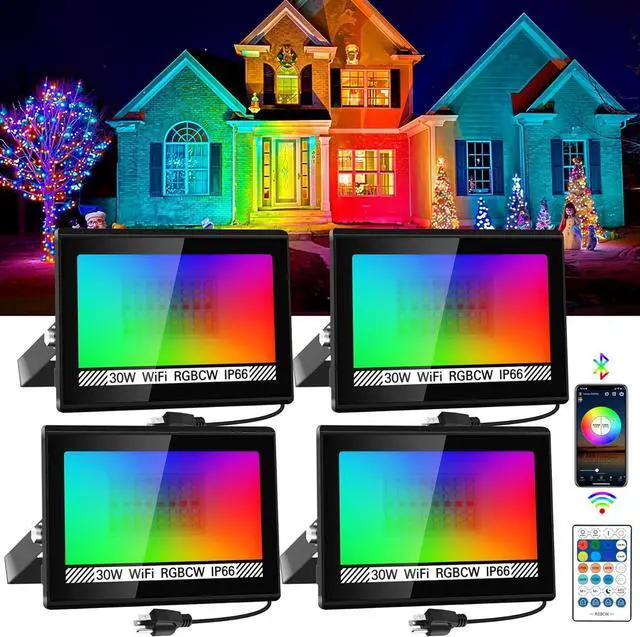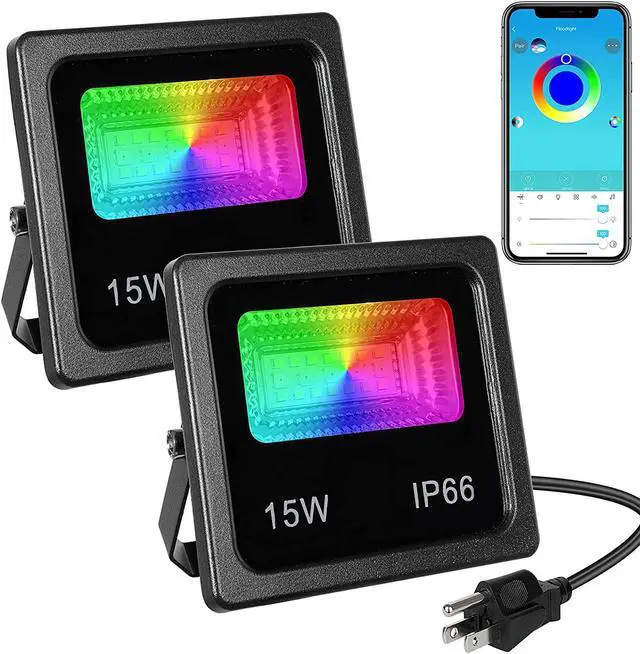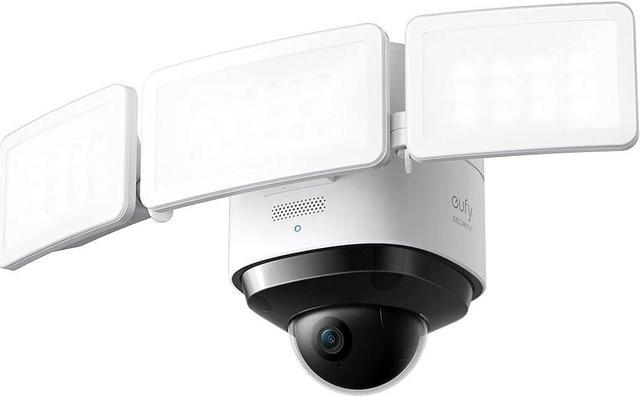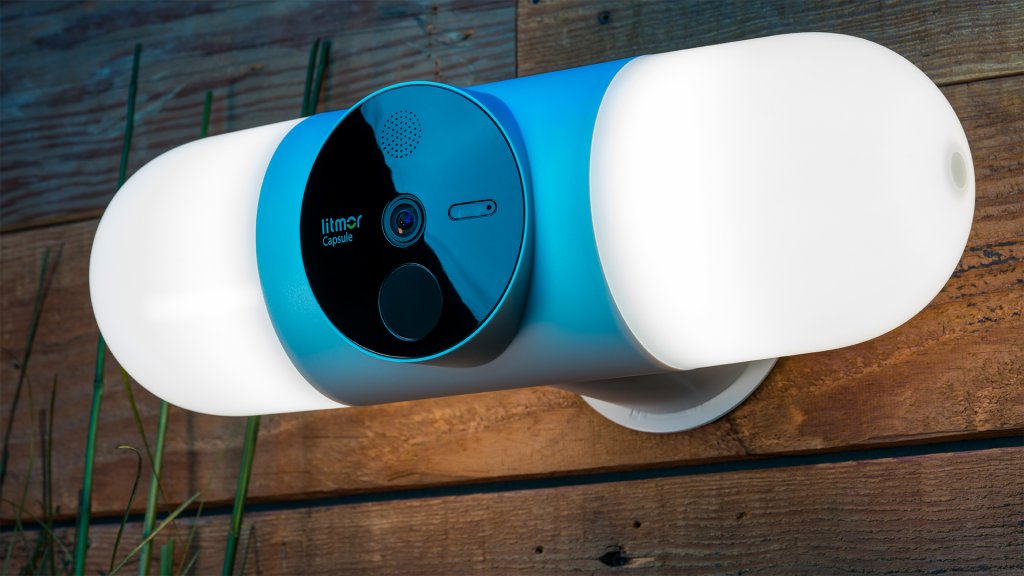Smart Home security devices have exploded in popularity in the last few years, from smart cameras to Wi-Fi doorbells and locks, and now smart floodlights. With the high velocity the IoT industry has had, it shouldn’t really be a big surprise that the “automate everything” trend has literally permeated every nook and cranny of the home. After seeing the lastest Alexa-enabled “smart toilets” at this year’s CES, I do mean every nook and cranny.
What saves the smart floodlights from my ridicule isn’t necessarily their game-changing ingeniuity or voice assistant razzle-dazzle, but the pure utility they deliver as an monumentally upgraded version of their “dumb” predecessors. With the Litmor Capsule smart floodlight camera featuring AI and 2K resolution however, the smart floodlight scene may have just gotten a little brighter.
A Remedy to the Home Security Ailment
I don’t know which came first, the name or the design, but Litmor fully leaned into the whole Capsule theme with this smart floodlight. When I first saw the device sitting on my desk it reminded me of an oversized ACME pill that Wile E. Coyote might mail order to use in a hairbrained attempt to capture the Road Runner, ending in his demise.
Aside from my initial comical impression, the device itself is an unique take on the smart floodlight design from top to bottom. With circular LED arrays pointing in opposite directions from the camera and housed behind frosted plastic domes, the resulting illumination becomes dissipated for what Litmor describes as “360° lighting”. This departs from the traditional floodlight-style of two adjustable light projectors.
When the Litmor Kickstarter crowdfunding campaign took flight in the summer of 2018, it was completely funded within 12 hours of launching the campaign, and within the following two months they exceeded their goal by almost 300%. The rapid success of the Capsule was a result of the unique features that they developed, with the 180° FOV (field of view), 2K video recording, and AI technology being new to the smart floodlight market.
While the technical features are clearly enticing for anyone looking to beef up their Smart Home security, the physical form of the light is intriguing in it’s own right. What looks like a rather plasticy design is actually quite sturdy, with anti-UV external materials and a robust internal build quality that would seem to prove this Wi-Fi floodlight can go the distance.
The Litmor Capsule Comes Loaded with Features
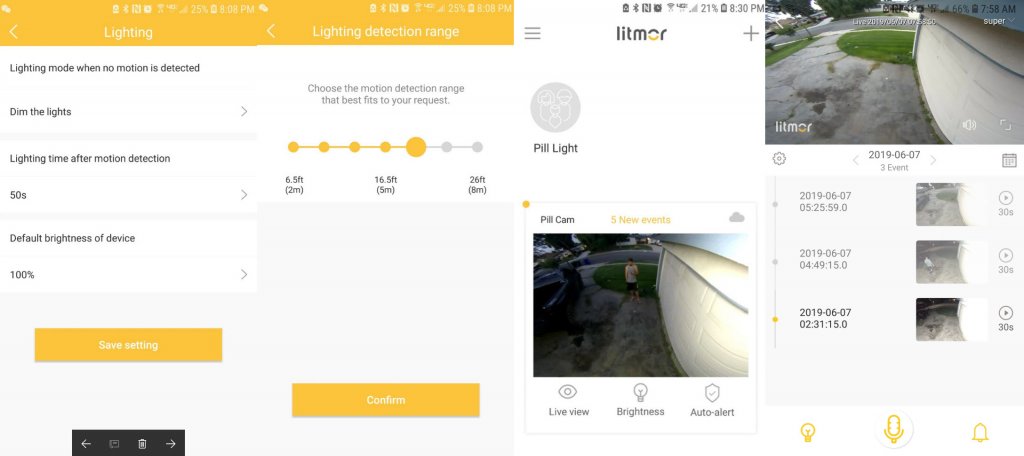
On the top of the feature list was something that we hear a lot about in the Home Automation space these days: AI. Litmor’s Capsule states that their AI-powered smart floodlight can deliver up to 99% less false alarms, which it does with behavior and family member recognition, as well as object vs. human identification.
One of the first specs that snagged my attention with this floodlight camera was the 180° FOV. Sure, this is something that many Wi-Fi doorbells come with but the application is completely different. Doorbells are at abdomen-height for many people, and there is plenty to be seen above and below the unit’s direct line of sight. Incorporating this into a device that is several feet overhead is an interesting approach, and a first of its kind.
Arguably the most critical factor in choosing any smart surveillance device is the capability of the camera, and on paper Litmor checks all the boxes; 2K resolution at (2040×1556), custom motion zones and 10x digital zoom, with full-color night vision and motion-detection up to 33ft.
For lighting, the device comes with dual LED arrays for a combined 2400 Lumens at 5000k (daylight), which offer stepless remote dimming to customize the brightness during motion detection or standby modes. Like most smart cameras today, the Capsule comes with a two-way audio system that includes noise cancellation for reduced background distractions, and a 110dB siren that can be activated remotely. An IP55 waterproof rating and operational range between -4° F to 113° F make it able to stand up to substantial weather. Technically, even if the temperature drops below -4° F Litmor claims the device will still operate from internally-generated heat, but above 113° F can present problems with proper operation.
In terms of connectivity, the floodlight camera can connect to Wi-Fi via 2.4GHz, with 128-bit AES encryption. The devices has a MicroSD slot for up to a 128GB card, or cloud storage is also offered as an upgrade. Currently in Beta mode for only $1/month or $1/year (confirmed with Litmor that at current time this cost is accurate, and will increase later), the cloud offers longer-term video storage for seven, 15, or 30-day recording cycles. And to top it off, Amazon Alexa has a skill for the Litmor Capsule to adjust the brightness level, turn on or off light independently, and turn on or off the alarm via voice command.
AI Powering Security Devices
General smart camera technology has progressed through the stages of 720p, 1080p, 2K, and some even come equipped with 4K resolution. Arguably, the industry’s pursuit of the highest quality resolution has reached the apex, at least for now. The next threshold for security cameras is to adopt artificial intelligence and facial recognition technology.
While it sounds pretty far out to think about home surveillance systems with the ability to detect whether someone is friend or foe, facial recognition technology with cameras on iPhones is already in daily use on millions of devices. AI technology is currently used in numerous applications from e-commerce websites, health care, and social media to even warfare: and the applications will only continue to grow.
There have been other smart cameras like the Nest IQ (or their smart doorbell the Nest Hello) that utilize AI technology for human and voice detection, as well as the ability to detect familiar faces or strangers. While I haven’t been able to test out the Nest Aware service that powers these algorithms, I have had some brief experience with the Maximus Camera Floodlight’s AI feature which was still fairly new when I took it for a spin. This allowed the smart floodlight to detect humans or vehicles, within specific areas of interest.
Litmor’s Smart Floodlight AI In Action
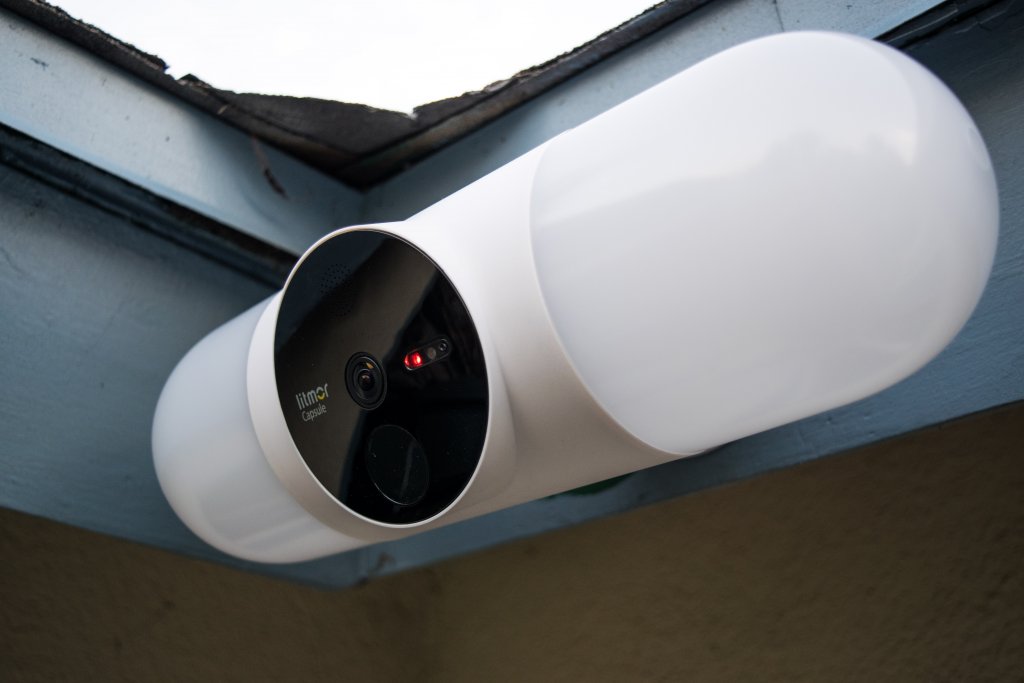
So what is the Litmor Capsule bringing to the table that other AI surveillance cameras haven’t been able to muster? First it would help to have some sense of why AI technology is really beneficial for in a smart floodlight, or any smart camera.
The whole purpose for greater intelligence in detecting the specific motion trigger is to reduce the amount of false alarms. If anyone has used a smart camera of any kind, the most tedious part of the early-use phase is fine tuning motion detection sensitivity and quickly snatching up the phone at every push notification of motion detection, just to see a tree blowing in the wind.
Now to be fair, the current problem is more one of convenience over specifically security concerns, since any alert without AI should be perceived as a possible threat. As the technology progresses though, I’m confident we will eventually see smart cameras and smart locks working in tandem to allow facial recognition home access when it detects owners approaching their door.
However in the current landscape, with Litmor’s AI plugged into their smart floodlight at a 180° view and illumination in multiple directions, their goal is to deliver not only reduced false alarms but also more peace of mind.
The Litmor Capsule AI is designed with a four-stage filtering process, that is designed to remove non-living motion (like trees, stray basketballs, shadows, etc), while also being able to distinguish humans from animals.
Beyond the human motion detection capacity, the AI is purportedly designed with a self-learning algorithm, which has the ability to recognize family members while picking them out of the strangers that might arrive at your home. This technology can help customize the alerts to notify users that family or strangers have arrived instead of just sending a notice of generic motion. It works by pairing any family member phones with the Litmor Capsule and app, so the device can use radio frequency (essentially geofencing) to notice when a known member is approaching. This works in tandem with the camera to identify when a person is detected in the field.
Perhaps the boldest claim from Litmor is that their Capsule can differentiate between suspicious behavior and normal behavior, as well as package deliverers as opposed to normal unknown visitors. According to them, if someone is sneaking around the house within the detection range it will recognize this as suspicious behavior. Additionally, if someone is wearing a mask and loitering around the home for an extended period of time it will also recognize the bevhaior as suspect.
Buy the Litmor Capsule 2K Smart Floodlight w/AI – $199.99
Take 2K and Call Me in the Morning
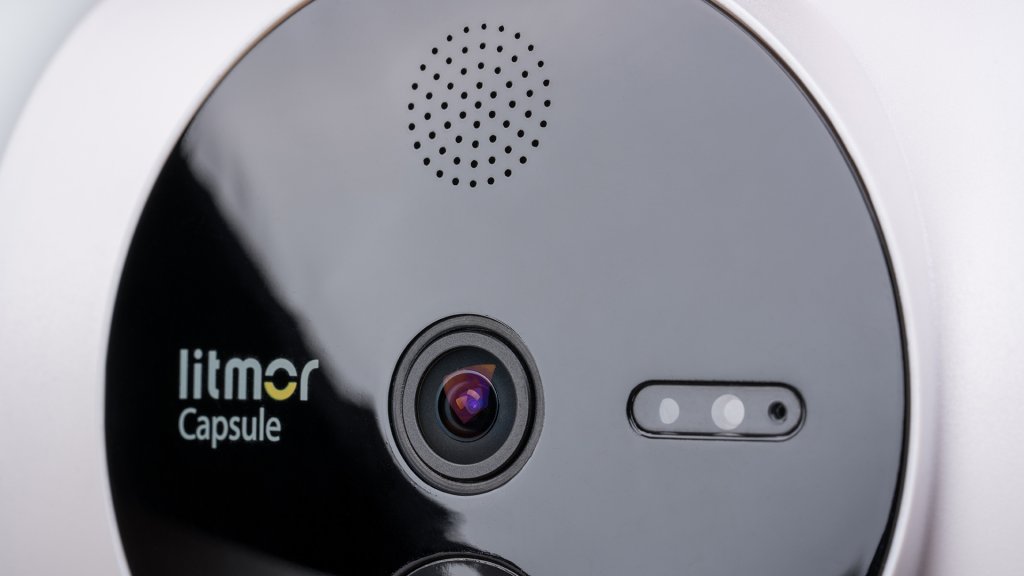
While the lights themselves are not position-adjustable like other smart floodlights we’ve tested (Maximus or Ring Floodlight Cam), with the Litmor Capsule’s LED arrays directing light to the sides it gives more of a wall sconce feel than a traditional floodlight.
Because of the device’s particular design, the lighting modules and housing project seven inches in either direction from the center of the unit, which make it best-suited for use on a wide open wall or under the eaves of a home where there is substantial flat area (note the camera can only be rotated 30° to -30° so mounting upside down underneath low eaves will not give a great viewing angle). My current floodlight is situated in a corner where two fascia boards meet with only about four inches between the base and the opposing board, so this device needed to be shifted a few inches for better placement.
On a side note; even when moving the floodlight away from the corner where my previous light was, since the lights are directed 180° from one another and cannot be adjusted, my initial assumption would be that the light is cast primarily along the wall and not out to the driveway. Of course the driveway is the direction where any motion would be coming from, and instead of a spotlight-type this is a “general area” illumination. However, I can say that it actually provided a substantial amount of light where I wanted it. Instead of specific hard areas of floodlight illumination and darkness, the Litmor light dissipated in an even glow that did project itself outwards down my driveway more than I anticipated. There was still a substantial amount of light cast towards the house and in areas it would not be useful, but the area of need was indeed covered. Litmor claims an illumination area of 750ft². While I can’t verify the accuracy of that measurement, I can say that it was able to project light roughly 20 feet out.
Image quality with the Capsule is nice, and the HDR delivers visibility from sunlight to shadows in the same field of view which is clear in both areas. Sometimes, even with direct sunlight on the lens the sensor has the ability to display a recognizable video feed.
Like most smart cameras, with the Litmor Capsule users can select a segment of the FOV where they want to monitor for motion detection within the overall field of view, or use the default fullscreen motion detection.
Fullsight mode vs Supersight mode
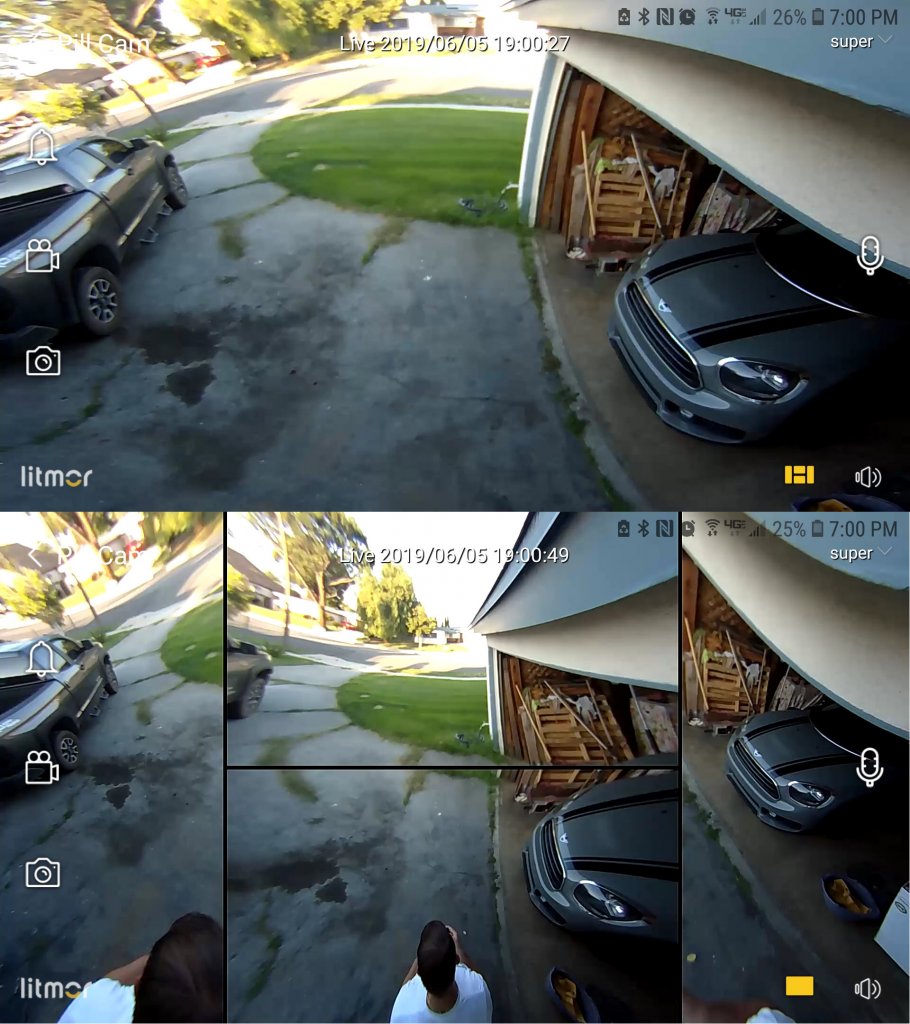
One area where the Litmor Capsule definitely excels is the 180° wide-angle FOV. Thankfully, unlike so many smart doorbells I’ve seen that claim 180° FOV, Litmor has a clever tactic for sparing users the annoying fisheye warping or full-circle video display. This smart floodlight camera delivers a substantial panorama picture that captures solid detail without distortion, by designating two unique modes for viewing, which have different characteristics. Surprisingly enough, both are actually very practical and useful.
First, they have Fullsight Mode. This is the clean, 180° horizontal, wide-angle view that presents an unbroken image of everything the camera can capture in one frame without distortion. This is the most practical view for normal use, and provides excellent coverage. However, this does have some blind spots, mainly underneath the device, above it (not as important) and to a lesser degree at the very left and right sides.
This is where the Supersight Mode comes to the rescue. For instances where users might want to get the image to the absolute boundaries of the camera’s FOV, this mode intelligently breaks the image up into four windows to show the left, right, top, and bottom of the camera’s maximum range. You can see the image above was taken immediately in sequence, and just by switching modes the blind spot that hid me under the camera was revealed in the Supersight mode.
This comes across looking almost like four completely separate video feeds from different cameras, and essentially covers 180° in every direction. By breaking the image up into singular windows, each segment can retain its proportions without fisheye distortion, and display more of the scenery. Now, I say “essentially 180°”, just because in this view the center portion of the video feed is snipped out to make room fo the peripheral imagery. I wouldn’t recommend this as the primary view mode of course, but as a supplemental option it really is a stellar feature to check every possible angle.
In prompt response to activity, the floodlight from the Litmor Capsule turned on almost immediately after detection (they claim 500ms but will just confirm it was very responsive).
When motion is detected within the sensor’s range, the camera will automatically record until there is no longer motion detected. I’m fond of this particular detail, because other smart cameras or doorbells I’ve used in the past relied on a set duration for recordings, and that one-size-fits-all approach doesn’t always capture everything that occurred. Also, I’d much rather have more footage than not enough, especially if it is stored to the cloud and not my local device.
I did notice that with the wide angle lens and my chosen placement alongside a perpendicular wall, towards the bottom of the image there was some distortion when in Fullview. From the other users who have placed this with a wide open FOV, I have noticed that there is no distortion so location should be taken into account before installation. I was limited by the length of my current power lines, otherwise I would have relocated it to a more suitable area for both video coverage and light distribution optimization.
Full-color night vision
A colored night vision video feed is available, however it is really just the camera recording normally with the ambient light that is given off by the LEDs when motion trips them. If the live view is accessed at night without motion detected (and the light is set to remain off as opposed to dim), the visibility is only ok. However, this can be resolved by leaving the light on a dim setting, or with remote control of the lights to full brightness so technically it is full-color night vision. Also, the visibility in the dark when the lights are on is pretty good which makes seeing general details about activity easy.
Just What the Doctor Ordered for Home Security
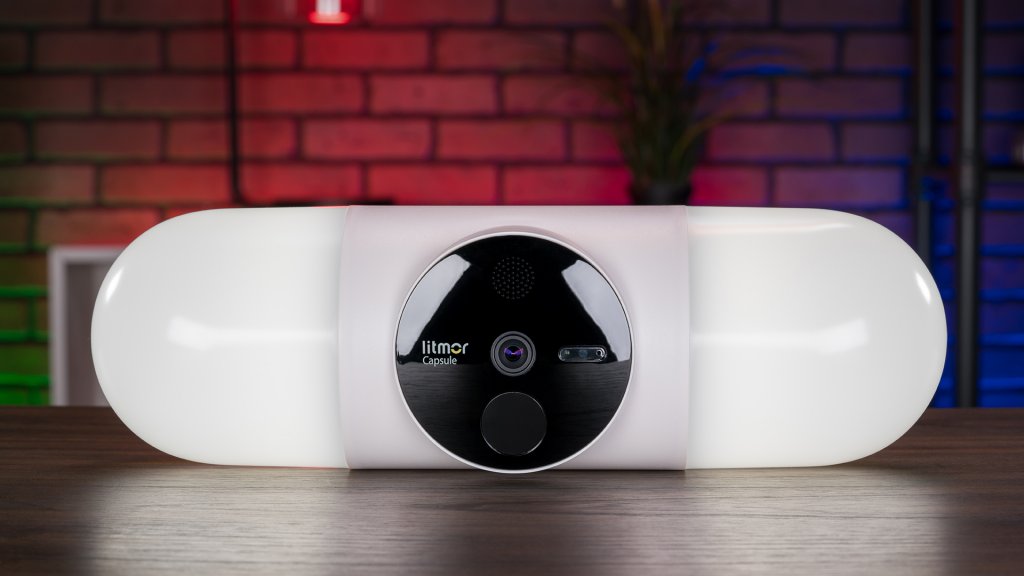
In all honesty, I didn’t think I would like the Litmor Capsule. Call me jaded, but after coming across countless smart security devices claiming to have “AI” capabilities and most of them falling completely flat on their face without functional or practical features, I figured this was just another to toss on the pile.
We are now in the sliver of time where a new technological discovery is not quite mainstream yet for smart devices, but not so new that people don’t know what it is. We are comfortably in the moment where the term “AI” is just well-known enough for the buzzword to be abused. To my great delight and surprise, the Litmor Capsule smart floodlight was not one of these imposters.
At $200 the Capsule is cheaper than the Maximus by $29, and the same price as the Ring Floodlight Cam. It has better stated resolution and a wider FOV than both, and a much brighter LED than the Ring Floodlight Cam, while also offering a local storage option with an up to 128GB MicroSD card. All three devices require a paid subscription for unlimited cloud storage of video clips.
The Capsule is definitely not without its flaws, and is by no means the ultimate king of the smart floodlights. Navigating through the app isn’t the most intuitive and some of the areas where other devices allow customization the Capsule does not. The AI features are really just the icing on the cake for me, and although the other two devices mentioned here have their own AI they are part of the paid premium service, while Litmor’s AI access is standard out-of-the-box. Overall, I’m impressed with the Litmor Capsule, and for their first product on the market they’ve managed to put together something that gives the incumbent leaders strong competition. Looking to the future, Litmor plans to launch a smart doorbell in 2019 and if their AI floodlight camera is any indication of what tricks they have up their sleeves I’m excited to see their next move.
Featured in this article:
Litmor Capsule Smart Floodlight w/AI, 180° FOV, and 2K Resolution – $199.99
Maximus Smart Floodlight Camera- $229.00
Note, all prices and products are accurate at the time of article publication, although some may have changed or are no longer available.

